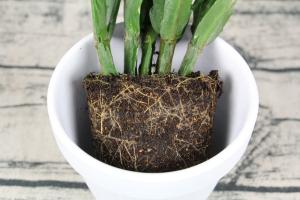When to Repot Weed Plants
Weed plants may be resilient, but they still need some TLC to grow healthy and strong. One of the crucial aspects of cannabis plant care is repotting them. Proper timing ensures that the plants get enough space for their roots to grow and access nutrients. In this article, we'll go over when to repot weed plants, signs that your cannabis needs to be repotted, and the best practices to follow.
When to Repot Weed Plants
So, when is the perfect time to repot your cannabis plants? Typically, cannabis plants should be repotted when they start showing signs of outgrowing their containers. This usually happens when the roots exceed the pot's capacity, which can lead to nutrient deficiency and stunted growth.
If you're growing cannabis plants from seeds, it's best to repot them once they've developed their second set of true leaves. This ensures that the plants are mature enough to handle the transplanting process. On the other hand, if you're growing from clones or cuttings, it's best to repot them once they've established their roots in the seedling container.
It's also important to note that repotting should be done during the vegetative stage of the plant's growth cycle. During this stage, the plants are actively growing and can recover from transplanting with ease. Avoid repotting during the flowering stage, as it can cause stress and affect the final yield.
Signs that Your Cannabis Needs to Be Repotted
While there is a general timeline for repotting cannabis plants, it's also essential to look out for signs that your plants are ready for a new home. Here are some of the tell-tale signs that your cannabis plants need to be repotted:
The plant looks wilted, even after watering
The root ball is visible through the drainage holes
The plant is stunted or slow-growing
The soil dries out quickly, even though you water frequently
The plant has become top-heavy and falls over easily
If you notice any of these signs, it's time to repot your cannabis plants into a pot that is at least twice the size of its current container.
Best Practices for Repotting Cannabis Plants
Now that you know when to repot your cannabis plants let's go over some best practices to ensure the process goes smoothly.
The first step is to pre-moisten the soil before transplanting. This helps the plant's roots better absorb water and reduces the risk of transplant shock.
Next, choose a pot that is at least two sizes larger than the current one, and that has good drainage holes. Fill the pot with pre-moistened soil, leaving enough space for the plant's roots.
Gently remove the plant from its current container, taking care not to damage the roots. Then, place the plant in the center of the larger pot and fill it with soil, tamping it down lightly to remove air spaces.
Water the plant thoroughly, and keep it in a shaded area for a few days to help it adjust to its new environment. During this time, avoid fertilizing the plant, as it's already going through a major transition.
Finally, be sure to monitor your newly repotted cannabis plants and give them plenty of light, water, and nutrients to ensure they stay healthy and strong.
Conclusion
Repotting your cannabis plants may seem daunting at first, but with the right timing and best practices, it's a crucial step in ensuring their growth and vitality. Keep an eye out for the signs that your plants need repotting, and follow these best practices for a successful transplant. Happy growing!

 how many times do yo...
how many times do yo... how many planted tre...
how many planted tre... how many pine trees ...
how many pine trees ... how many pecan trees...
how many pecan trees... how many plants comp...
how many plants comp... how many plants can ...
how many plants can ... how many plants and ...
how many plants and ... how many pepper plan...
how many pepper plan...






























